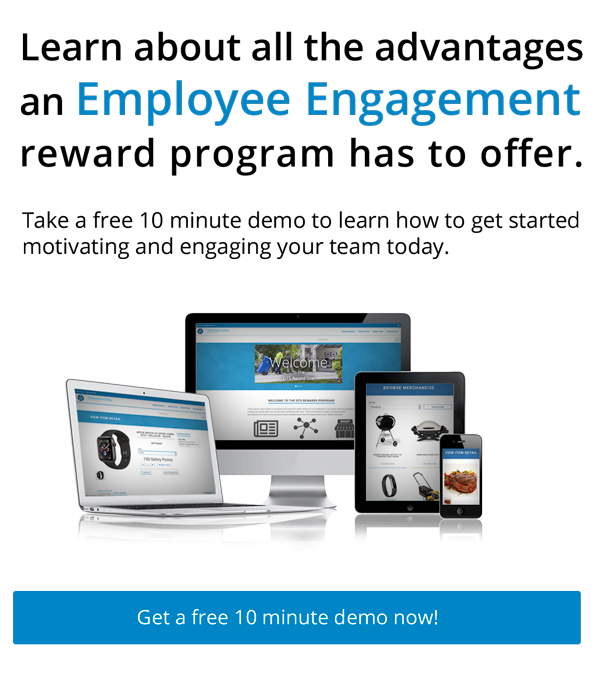Losing your best employees?
If you learned your best employees had one foot out the door, what would you do? Would you try to save them or assume it was simply too late? The reality – once you learn of an employee’s dissatisfaction, it’s already too late. Something is missing. Even the highly motivated, most positive, and largest contributors, will suffer in silence and look elsewhere for career satisfaction.
It’s a real challenge and one that’s not going away any time soon. Employee turnover costs US companies over 1 trillion a year. From front line workers to dock workers to office staff – employees are quitting every day and many without any notice.
In a recent study from Gallup - roughly 48% of US employees are actively looking for a new job. What would happen if half of your staff decided to give notice? Putting aside the daunting costs of turnover, the larger loss is in losing your forward thinkers - the ones who consistently excel and will be future leaders.
Why do employees leave their job?
One of the biggest reasons – employees feel unfulfilled and are looking for what else could be out there. Some assume attrition is inevitable - employees will leave regardless. But according to Gallup, “52% of voluntarily exiting employees say their manager or organization could have done something to prevent them from leaving.” That’s a staggering number of employees who might have stayed with their previous employer had they received the level of engagement desired. One effective way to reduce and possibly eliminate this turnover is with “Stay Conversations”.
What is a “Stay Conversation”?
“Stay conversations are one-on-one conversations designed to learn more about the employee, including their passions and career goals, what they value in life, and what they need to be more successful in their role. Effective stay conversations are two-way exchanges that get to the heart of the individual's needs, motivations, and engagement drivers.” - Gallup
Why are “Stay Conversations” Important?
Great leaders recognize the differences in their employees. They foster strengths and coach challenges. They listen closely to their employees and focus on what motivates and drives performance. Strong leaders incorporate these types of conversations into every touchpoint with their employees. Not only do they foster growth in their employees, by being committed to this process, but leaders also build a level of engagement and commitment.
It's also important to mention – stay conversations should not be a one-time occurrence. It needs to be an ongoing process and can easily be incorporated into regularly scheduled one on ones. Use this as an opportunity to learn about what’s important to your employee, what motivates them, and their vision for the future. When a manager cares about his/her employee, their well-being, their goals, and ideas – an employee will be more engaged and have a greater desire to grow within the company. That’s precisely why a stay conversation can help retain great talent.
Setting Goals for Success
When setting goals and a path for success, always take time to establish key points for discussion. This is a perfect coaching opportunity. Draw on an employee’s strengths and weaknesses. Consider your audience. As a reminder, this is a great opportunity for leaders to get to know their employees better.
- What behaviors does the employee currently exhibit?
- Are they the leader of the team?
- Do they lead or follow?
- Do they often bring up great ideas?
- What motivates them?
- Are they the first ones to jump right in and adopt a new process with enthusiasm?
- Do they enjoy receiving public recognition?
Set Expectations
Always communicate the purpose of the conversation and provide your employee with a few items ahead of time for their preparation. Be open to what they present as being important to them. Put more focus on the positives and prepare actionable steps for items requiring more focus. By expressing the expectations ahead of time, with the main purpose – support of their growth, employees will have greater respect for their manager and a greater desire to excel.
Establish Ownership
For this coaching process to work well, establish ownership for each task and follow-ups. These conversations are ideally based on future events and goals. By setting goals together, the level of engagement between leaders and their employees inevitably increases significantly. To continue the engagement, leaders need to follow up on the actionable items and set expectations for not just their employees, but also for themselves.
Implement a Comprehensive Approach
It’s only when leaders and employees communicate their needs and aspirations – while sharing ideas with others, leaders can identify possible roadblocks. If these roadblocks are impeding employees from effectively completing tasks, it may be time to examine and replace them. Being able to pinpoint these challenges, allows leaders to resolve the stumbling block and reduce turnover.
Recognize and Reward
“I hate being recognized and rewarded for my accomplishments”, said no one ever! Employees LOVE being recognized for their contributions and being rewarded for their accomplishments. After goals are established, mirror achievements with rewards! You might not be able to budget pay increases but rewarding improved performance and achieving set goals – is worth it! Make sure you ENGAGE, MOTIVATE AND REWARD!
Final Thoughts
Employee Attrition is avoidable. Don’t allow your STARS to walk out the door. Encourage an atmosphere of fresh ideas. Foster your talent by listening to what motivates them. Prepare a success plan together and hold each other accountable. The number one goal of any leader should not be to simply get the job done. The number one goal should be - foster the talents of your employees, provide them with the space and resources for growth, encourage and recognize their contributions, reward them for their achievements and celebrate the accomplishments.
If there is one thing the pandemic has reinforced, it’s that change is constant and inevitable. The more quickly business can adapt to changes, the more successful they’ll be.
Contact one of our Incentive Professionals today to ensure that you are prepared for these trends in the coming year!



